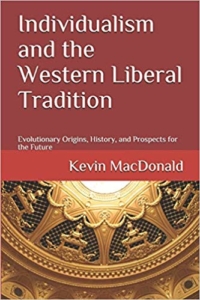Britain’s technocrats: The economics of truth
Economics is tailor-made for technocrats. It revolves around systems, and systems are everything for our current hyper-managerial class of social engineers. Once a system is in place, whether it works or not takes second place to its complicated maintenance. The subsequent problem for the technocrat task force is how that system is presented to non-specialists, particularly when it does fail, and the answer is always obfuscation by complexity. Part of technocratic best practice is to introduce as much complexity as it takes to protect the economic system from the comprehension of ordinary citizens. By performing this act of consecration, the technocrat becomes the equivalent of the priest in the medieval church, the only one in the congregation who can understand Latin.
I am not an economist. In fact, economics A-level is the only examination I have ever failed. But we all have a basic understanding of economics founded on our everyday use of money. In the same way, although we are not all psychologists, we have a basic understanding of psychology gleaned from our interactions with others. The word itself, “economics”, has its roots in the Ancient Greek oikonomos, which referred to domestic economy or what would have been called until recently good housekeeping. But economics has become something far different from merely balancing the household books. I have never found a definitive source for this quote, although it is sometimes credited to Bernard Lewis:
“Astrology became astronomy. Alchemy became chemistry. I wonder what economics will become.”
Whatever mutations economics is going through, its effects on ordinary people are becoming increasingly difficult for governments to spin to a British public who are seeing economic decline first hand. No matter how desperately spin-doctors and policy advisers try to manipulate tractor production figures, ordinary folk can see the state of the farm.
Inflation is the obvious example. It is a relatively easy concept to grasp, and is difficult to hide from people who go shopping. Its true severity is masked as much as possible, and this is the technocrat in action, mastering the dark arts of changing the everyday perception of reality. Governments use highly rigged economic data, and constantly tinker with calibration. “A change in the way inflation is measured” is a technocratic catchphrase and never an indication of greater transparency. But mopping up after the results of money-printing is only part of the government’s mission. There are also the failed projections, the inaccurate forecasts, the plain old broken promises. They will have adversely affected ordinary people, and it is the technocrat’s task to persuade them that it hasn’t, not really. If it has, the blind hand of economic forces can be summoned to bear the responsibility. The technocrat is absolved. Systemic breakdown is never a fault of technocracy.
All definitions of an economy broadly agree on the term as an expression of the financial infrastructure associated with the production and provision of goods and services. The economy is also an early-warning device, alerting the attentive reader to the likely economic weather ahead. It is a highly complicated version of a barometer or a weathercock. Failure to pay attention to the vagaries of the weather, as every farmer will know, can mean ruination, and it is no good wailing over your spoiled crops if you failed to protect them against the storm. That, however, does not stop technocratic apologists from essays in hindsight. Examples are plentiful, but I’ll focus on one from the United Kingdom.
For reasons noted, the British people are not known for rushing out to read reports on government economic policy hot off the presses, and so they may have missed a recent report from The Centre for Policy Studies, a Right-of-center think-tank. The Report is entitled Taking Back Control, and the always strident Daily Mail’s headline sums up the document’s conclusion. “Mass migration does NOT boost the economy”, it thunders in a piece about the report. “You don’t say,” seems the politest response to this bombshell, but there is another question. Who thought it would?
The International Monetary Fund and the World Economic Forum both believe that migration is economically beneficial to those countries which host immigrants, so it has globalist legitimacy for governments to apply it as a basic principle. The WEF talks of migration as “a model for sustainable growth for all”. Always with the models, another key piece of technocrat apparatus. The model to which mass migration is a technocratic response is that with ageing populations in the West and birth-rates below replacement level, younger people must be imported into Western countries in order to work in certain otherwise under-employed areas. They will then pay income tax, and the public weal will increase accordingly. Anyone who believes this problem has been solved in Britain by years of mass migration probably already works for the Home Office.
Taking Back Control was co-written by Robert Jenrick, who has the experience to know his subject, having been Minister for Immigration in 2022/3. Jenrick resigned from the government, however, over the Rwanda scheme to fly immigrants to that African country for processing, citing his dissatisfaction with the legal challenges that have stalled the whole project. Jenrick and his co-author, fellow ex-minister Neil O’Brien, present a stark picture, and the main analysis of Taking Back Control confirms that:
“Large-scale migration has not delivered significant growth in GDP [Gross Domestic Product] per capita, and has increased the strain in our capital stock, from roads and GP surgeries to housing”. [Italics added].
The authors do not mean “our”. They are referring to the lot of people who most likely will never read their report, not their own technocratic class but ordinary people. While the national economy seems to be moving out of recession in the UK, economies at a local level — the one that involves real people — are struggling to absorb mass immigration concerning which they were never consulted. The list of strains on the system is not encouraging: 89% of the increase in the UK housing deficit is due to illegal immigration (with the rest presumably resulting from legal immigration); this has the effect of price increases in the housing market and a knock-on rise in rental prices. Migrants from the Middle East, North Africa and Turkey are twice as likely to be economically inactive than their British equivalents. Immigration rates are to grow steadily in the coming years. Housing, hospitals, schools and infrastructure are all adversely affected by open borders, as Britain’s effectively are. The list continues, and an unavoidable truth begins to suggest itself; If the technocrats thought that immigration would boost the economy, and it didn’t, then they were badly wrong, and the price of their mistakes is all of the above and the rest of the list in Taking Back Control. And that list is not complete.
Taking Back Control, for all its economic data, fails to factor in hatred toward the traditional White British majority so common among current UK elites.
Nor does it factor in crime. It’s as though the extra policing, legal resources, possible emergency medical care for perpetrator and victim, penal detention and possible compensation that come as part of the immigration package is all available “free”. Trauma nurses don’t need paying, they do what they do for kicks, and lawyers all work pro bono. This is all the more curious an omission as Jenrick has called for a database on immigrant crime broken down into ethnicities (such as the Danish government publishes); the UK government currently claims it holds no such data.
Immigrants commit crime in disproportionate numbers and so will cost more to police. In Germany, 60% of suspects in cases involving violence are foreign migrants. The taxpayer, of course, ultimately pays for this, and with British income tax at a post-World War 2 high and local council taxes rising steadily across the country, a boosted economy is certainly not what the taxpayer is seeing as a result of mass migration.
However, there are co-axial economies which are being boosted by immigration, just not the national one into which people pay. Someone is making money from immigration. Hotel owners whose properties have been bought or rented at competitive prices by the Home Office, companies such as Serco which administer these hotels for the comfort of immigrants, and of course the people smugglers. Their business model is excellent, and their economy has certainly been boosted by Britain’s failure to secure its border.
Neil O’Brien rounded out Taking Back Control in a piece for Conservative Home. But, again, the problems pin-pointed and the solutions offered are nothing that has not been said for the past decade in what remaining pubs there are in Great Britain. Mr. O’Brien offers up the optimum immigration/economy model once more:
Immigration on [a large] scale is very often presented as an unalloyed good for the economy. On one level, this is correct: a larger workforce will lead to higher GDP, all else being equal. [Italics added].
Equal to what? Let’s take one inequality. In the last decade of nominally Conservative government, nine million people have migrated to the UK with 5.7 million migrating the other way for a net immigration total of 3.3 million, or a third of a million a year, close to a thousand people a day. Firstly, the social capital represented by those leaving as against that of the arrivistes will not be equal, and so increased immigration will lead to decreased social capital. O’Brien seems reluctantly dismayed that utopia has a glitch in the system:
If large-scale, relatively low-skilled migration has been great for the living standards of British residents, it doesn’t seem to be showing up in the data. While immigration can undoubtedly be enriching in many ways, the promised economic benefits have not materialized.
They most certainly have not and, while the remit of Taking Back Control is the British economy, that is not the only yardstick of “the living standards of British residents”. “It’s the economy, stupid”, was a cute jingle, but it’s not just the state of the national economy which is the Pole Star for people’s lives. People’s living standards cannot be exhaustively checked off against the flow-charts of their income and outgoings, their own personal oikonomos. Quality of life is not fiscal.
Ordinary folk who have never read a government report in their lives will be acutely aware of the adverse effects of mass migration, and not because their share portfolio has taken a bit of a beating or economic performance indicators are a little disappointing. Britain, philosophically speaking, is often called the home of empiricism, and its people are well equipped to understand immigration on an empirical level. They see it and they suffer from it. It’s not data, it’s real.
Hospital waiting lists have spiked even if a patient can get an appointment with their GP for a referral in the first place. Ambulance waiting times have got so bad people are advised to drive the patient to hospital themselves where possible. Dentists are over-subscribed many times over. Schools are becoming a Babel-like assortment of different languages, with a resulting slowing of the educative process. Public transport specifically for migrants has been laid on in some areas, diverting vehicles and drivers from regular routes. NHS translators may be required at public expense, further slowing down medical care. All of this inflicts costs economically, certainly, but the social cost is what affects people’s well-being.
Then there is the darker side of immigration.
There is not a sophisticated, intellectually jazzy way of saying this. With increased immigration of the ethnic type arriving in the UK, British parents increasingly fear for the safety of their children. Some immigrants have shown already that sexual proclivities which have long been normalized in their countries of origin have traveled with them. And they have traveled to a country in which one of the greatest scandals — and greatest cover-ups — in the nation’s history involved immigrants or their offspring, and the abuse of young White and Sikh children. Known as the “grooming gang scandal”, it is one of the great collusions between British media and the state to protect immigrants. Many migrant holding centers are being placed near schools, boosting the anxiety levels of parents and children. It’s not just the economy.
Another co-axial economy doing very nicely as a direct result of illegal immigration is money-laundering. The boom in Turkish barbershops, vape shops, candy stores, manicure parlors and other cash-intensive retail outlets all follow the same business model as the big boys, mostly Russians in London. London has long been the nerve center for laundering money, and this received an accelerant after the Soviet Union fell as a new and hastily formed group of oligarchs needed to get their money out fast. London welcomed them, its banks and the London Stock Exchange more than happy to help. Today’s new breed of money-mover — many of them literally young Turks — exploit the fact that the British business laws relating to retail establishments are laughably porous, and so Potemkin businesses abound. So plenty of money is flowing healthily through or around the British economy but, again, there is not much boosting of the overall economy going on.
These are all an economic layman’s snapshots of a great deception, that Britain could import — or simply allow in — millions of immigrants, and not only would they bring their colorful clothes and favorite recipes to enrich us all culturally, but they would eventually, soon, enrich us all financially as well. It was all a miserable lie. It wasn’t the truth. That comes later.
In 1986, a comment was made during the famous “Spycatcher” trial. The trial concerned a book written by a former employee of MI5, Britain’s domestic intelligence agency, which threatened to compromise Margaret Thatcher’s government. During an exchange that verged on the epistemological, British Cabinet Minister Sir Robert Armstrong was questioned by barrister Malcolm Turnbull (later to become Prime Minister of Australia) on the difference between a misleading impression and a lie:
“Turnbull: What is the difference between a misleading impression and a lie?
Armstrong: A lie is a straight untruth.
Turnbull: What is a misleading impression? A sort of bent untruth?
Armstrong: As one person said, it is perhaps being economical with the truth”.
Sir Robert may have been referring to Edmund Burke, who used the phrase “An oeconomy of truth” in the first of his Letters on a Regicide Peace, but the phrase resonates today in a world in which, while information proliferates, the truth becomes more obscure. The British government, about to change hands politically, has certainly been economical with the truth about the economy, and used it to justify mass immigration.
But did the technocrats really just get it wrong, or is the purpose of the mass importation of hordes of fighting-age men part of a darker purpose? I suggest that it was always about replacing the historic White British population motivated by hatred for them. TOO has had many articles on how Jewish elites have championed mass, multicultural migration to the UK via media and have an outsize financial presence in both major parties, as Tobias Langdon has repeatedly shown (e.g., here). They are certainly part of it, as well as the individualist narcissistic, Whites like Tony Blair who willingly go along with it motivated by the prospect of fame and fortune. A pathetic state of affairs that neither party seem willing to correct.




 It is not hyperbolic to state that the neo-liberal establishment is looking to create a globalized, mobile, de-racinated, and compliant serf class. They are already well on their way. The rhetoric is at this point well-understood, and as we enter what the ruling class believes is the end-stage in their consolidation of permanent power, they have become more brazen, in many instances not even bothering to hide their true intentions. One example is in Lewiston, Maine, where city officials explicitly state that their importation of Somalis is in no small part to become cogs in the service sector economy. They provide English classes to these imports “in order to improve their chances for employment. The goal is to compress the usual multi-generational English-acquisition process to one generation so that the Somalis can get jobs in the service economy.” With an average IQ of 68, two points below the threshold for mild mental retardation, we are not talking about the engineers of tomorrow, but that’s the beauty of a globalized workforce from the perspective of the multi-nationals. Somalis serve the dual purpose of working at McDonald’s and destroying social cohesion with violence and sheer alienness, whereas Asia, especially India, has been a vast resource for cheap tech sector workers. 70.9% of all H-1B applicants in 2015 were from India, with China in second at 9.7%.
It is not hyperbolic to state that the neo-liberal establishment is looking to create a globalized, mobile, de-racinated, and compliant serf class. They are already well on their way. The rhetoric is at this point well-understood, and as we enter what the ruling class believes is the end-stage in their consolidation of permanent power, they have become more brazen, in many instances not even bothering to hide their true intentions. One example is in Lewiston, Maine, where city officials explicitly state that their importation of Somalis is in no small part to become cogs in the service sector economy. They provide English classes to these imports “in order to improve their chances for employment. The goal is to compress the usual multi-generational English-acquisition process to one generation so that the Somalis can get jobs in the service economy.” With an average IQ of 68, two points below the threshold for mild mental retardation, we are not talking about the engineers of tomorrow, but that’s the beauty of a globalized workforce from the perspective of the multi-nationals. Somalis serve the dual purpose of working at McDonald’s and destroying social cohesion with violence and sheer alienness, whereas Asia, especially India, has been a vast resource for cheap tech sector workers. 70.9% of all H-1B applicants in 2015 were from India, with China in second at 9.7%.







